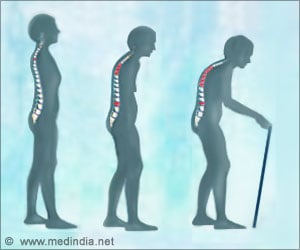Approximately 80% of those who have already suffered a broken bone due to osteoporosis remain unprotected against the risk of further disabling fractures.

‘Approximately 80% of those who have already suffered a broken bone due to osteoporosis remain unprotected against the risk of further disabling fractures.’





"This report is a necessary and urgent call to action," said
co-author Professor Eugene McCloskey, Director of the MRC ARUK Centre
for Integrated Research in Musculoskeletal Aging, Metabolic Bone
Center, Northern General Hospital, Sheffield, UK. "A 'fracture tsunami' is approaching, and the resulting human and socioeconomic burden will have an enormous impact on all countries with ageing populations. The result of fragility fractures can be profoundly debilitating, with chronic pain and disability leading to reduced mobility and quality of life. Fewer than half of seniors who survive a hip fracture will walk unaided again, and up to 20% will become residents of care homes in the year following the fracture."
The report identifies the following ten major care gaps that are preventing early assessment and treatment, and outlines possible solutions that could be implemented by national health authorities worldwide:
- Poor case finding and management is found in regard to (1) secondary fracture prevention, (2) osteoporosis induced by medicines, (3) diseases associated with osteoporosis, and (4) primary fracture prevention for individuals at high risk of fracture;
- Suboptimal communication and low public awareness is identified in regard to (5) the importance of staying on prescribed treatment, (6) public awareness of the serious impact of osteoporosis and fracture risk, (7) knowledge of the benefits versus the risks of osteoporosis treatment;
- Neglect by national governments and healthcare systems: (8) impeding access and reimbursement to osteoporosis assessment and treatment, (9) failing to prioritize fragility fracture prevention in national healthcare policy;
- Lack of epidemiological data (10) particularly in the developing world, is needed to help inform policy development. This is of special urgency given that projections indicate that the burden of fragility fractures will shift to the developing world over the next four decades.
"The care gaps described in this report, together with their associated solutions, outline a Global Framework for tackling the devastating burden of osteoporotic fractures around the world. We urge national policymakers and healthcare professional organizations to work together to identify local gaps in the provision of best practice for the populations that they serve. One important step, among others, is the systematic implementation of Fracture Liaison Services to address the need for secondary fracture prevention within the most high risk patients."
Advertisement
Source-Eurekalert















